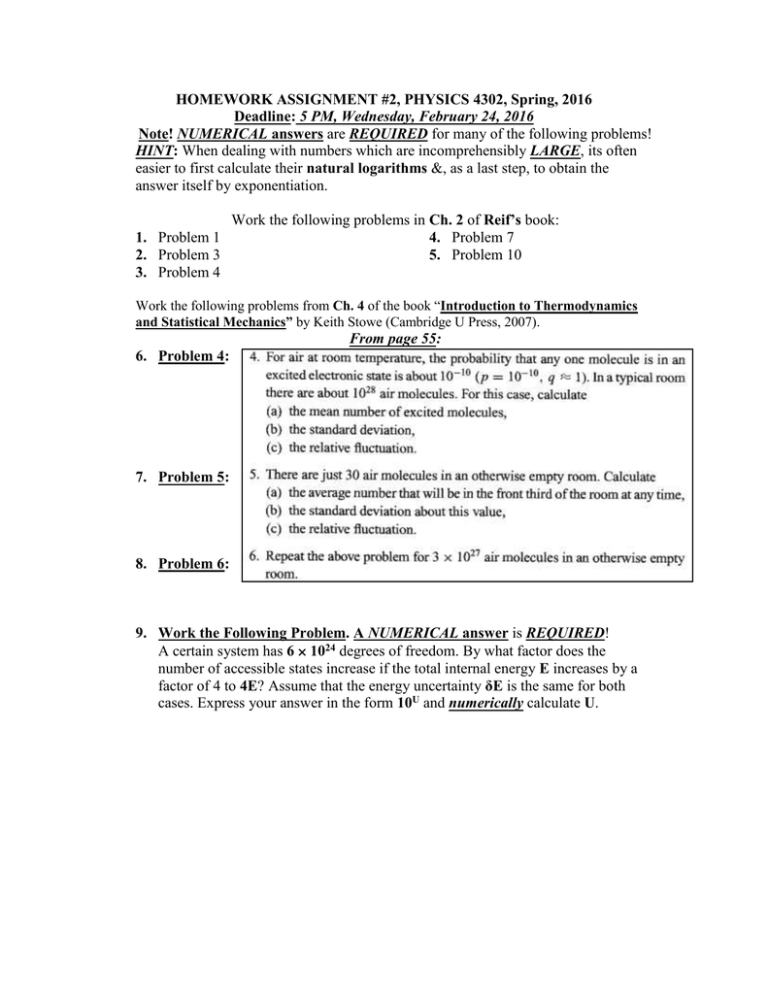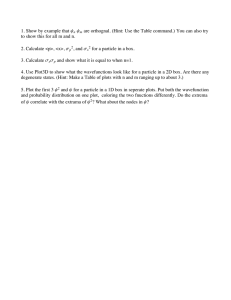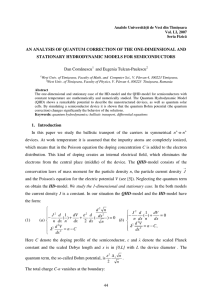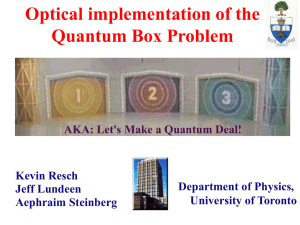HOMEWORK ASSIGNMENT #2, PHYSICS 4302, Spring, 2016 Note! 1.
advertisement

HOMEWORK ASSIGNMENT #2, PHYSICS 4302, Spring, 2016 Deadline: 5 PM, Wednesday, February 24, 2016 Note! NUMERICAL answers are REQUIRED for many of the following problems! HINT: When dealing with numbers which are incomprehensibly LARGE, its often easier to first calculate their natural logarithms &, as a last step, to obtain the answer itself by exponentiation. Work the following problems in Ch. 2 of Reif’s book: 1. Problem 1 4. Problem 7 2. Problem 3 5. Problem 10 3. Problem 4 Work the following problems from Ch. 4 of the book “Introduction to Thermodynamics and Statistical Mechanics” by Keith Stowe (Cambridge U Press, 2007). From page 55: 6. Problem 4: 7. Problem 5: L 8. Problem 6: 9. Work the Following Problem. A NUMERICAL answer is REQUIRED! A certain system has 6 1024 degrees of freedom. By what factor does the number of accessible states increase if the total internal energy E increases by a factor of 4 to 4E? Assume that the energy uncertainty δE is the same for both cases. Express your answer in the form 10U and numerically calculate U. Some (perhaps) more challenging problems. The following are required problems for the graduate students in Physics 5300. Undergraduate students in Physics 4302 may try these for 10 bonus points each on the Chapter 2 Homework. From page 57 of the book by Keith Stowe 10. Problem 18: 11. Work the Following Problem: A quantum mechanical particle (with no spin) is confined to a 3 dimensional rectangular box, with one corner at the origin. The lengths of the sides of the box are in the ranges 0 Lx (3 10-2 m), 0 Ly (1 10-2 m), 0 Lz (2 10-2 m). The magnitude of the particle’s (3-dimensional) momentum is constrained to be in the range 0 p (2.5 10-23 kg m/s). NUMERICALLY Calculate: a. The probability of the particle being in any one single quantum state. b. The probability that the magnitude of the particle’s (3-dimensional) momentum is in the range 0 p (1.5 10-23 kg m/s). When doing these calculations, it might be helpful to again look at the HINT near the top of the previous page about dealing with very large numbers.






